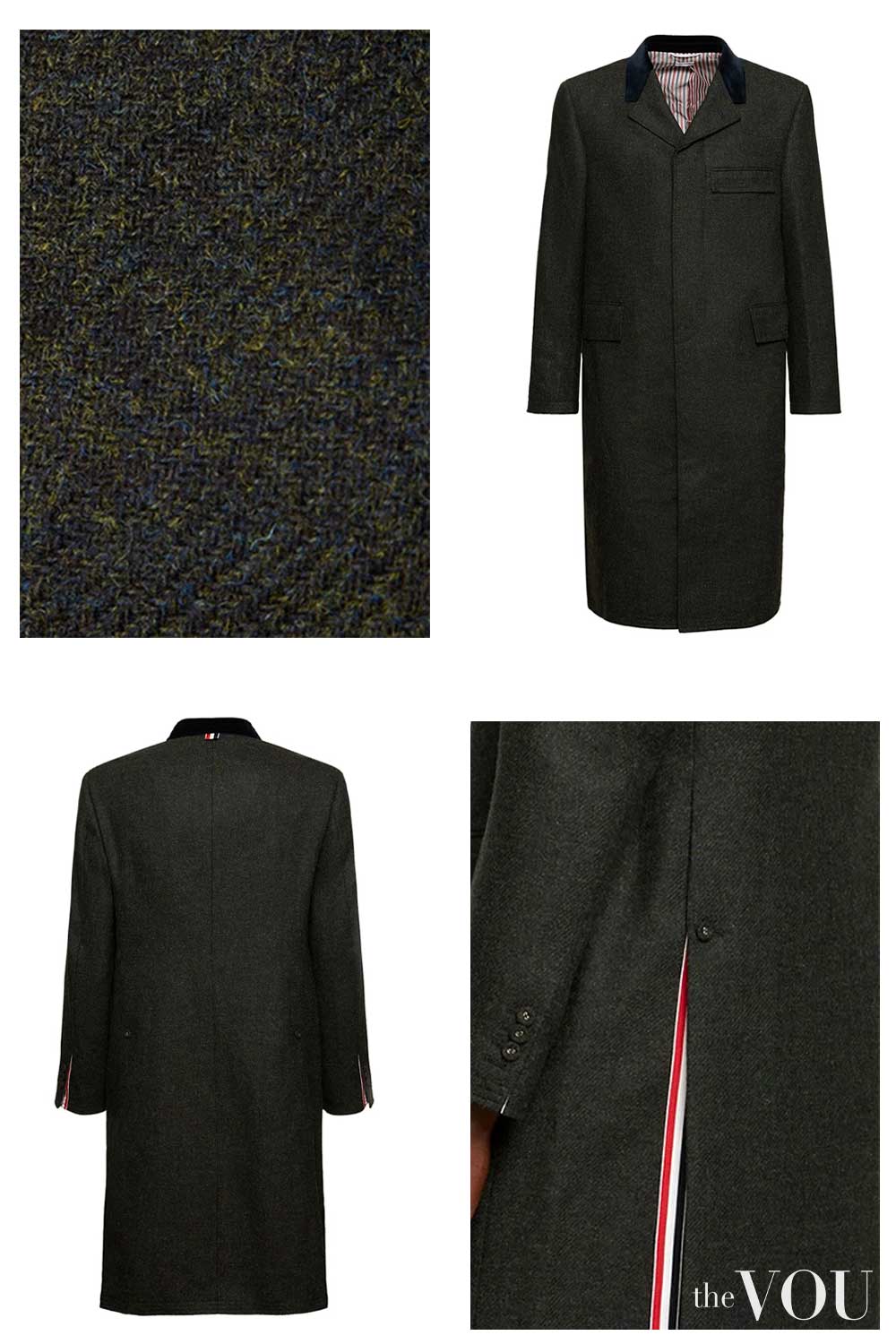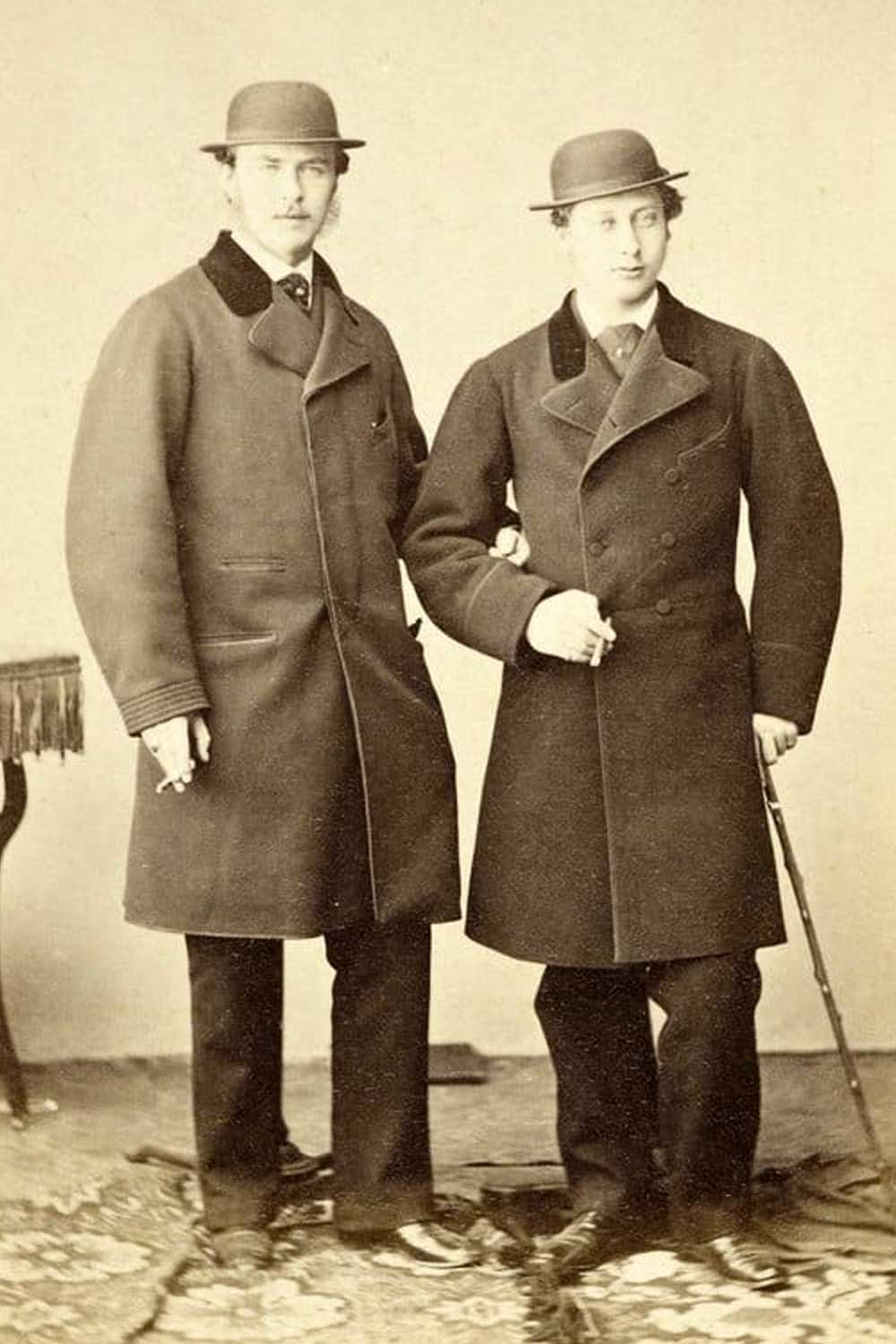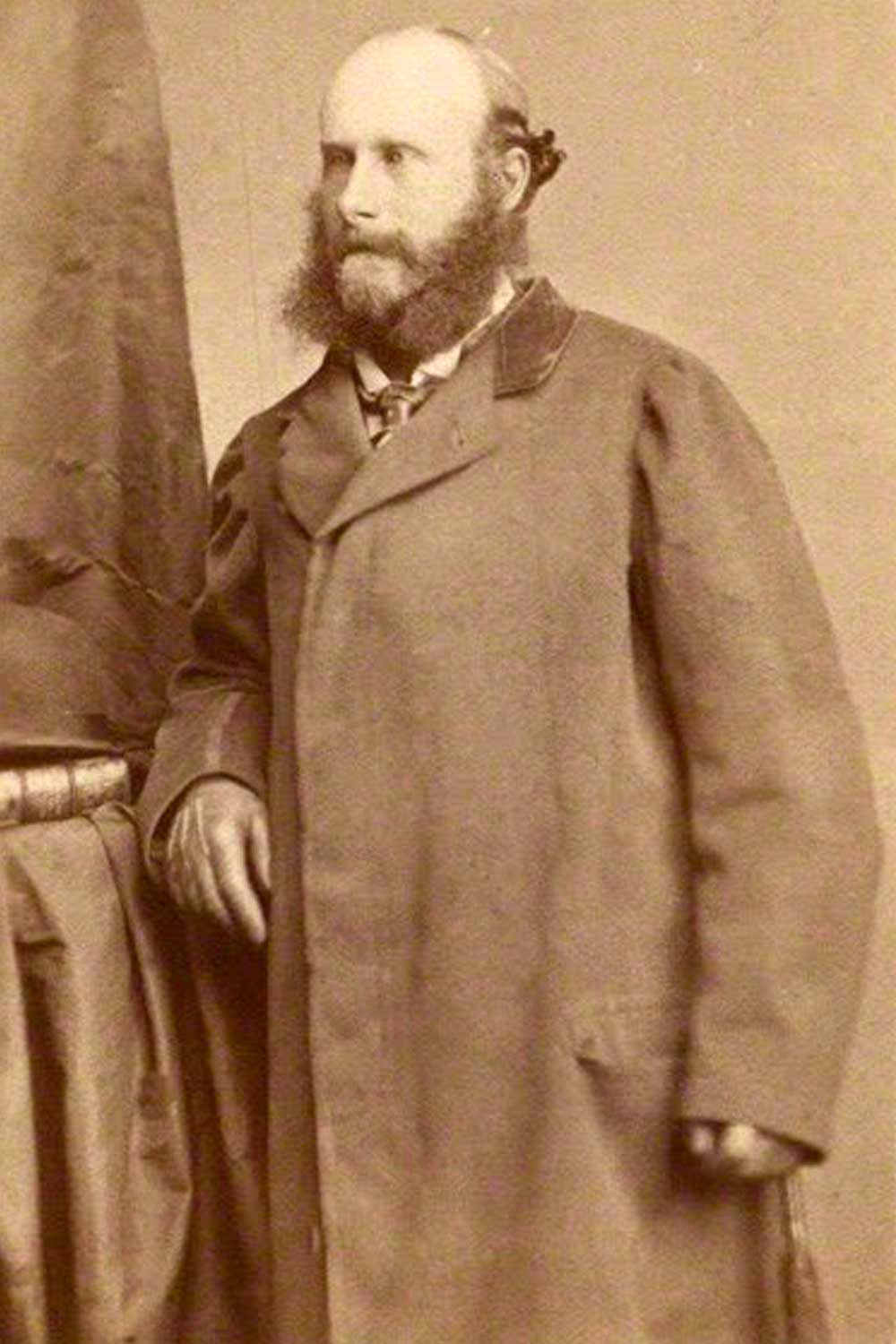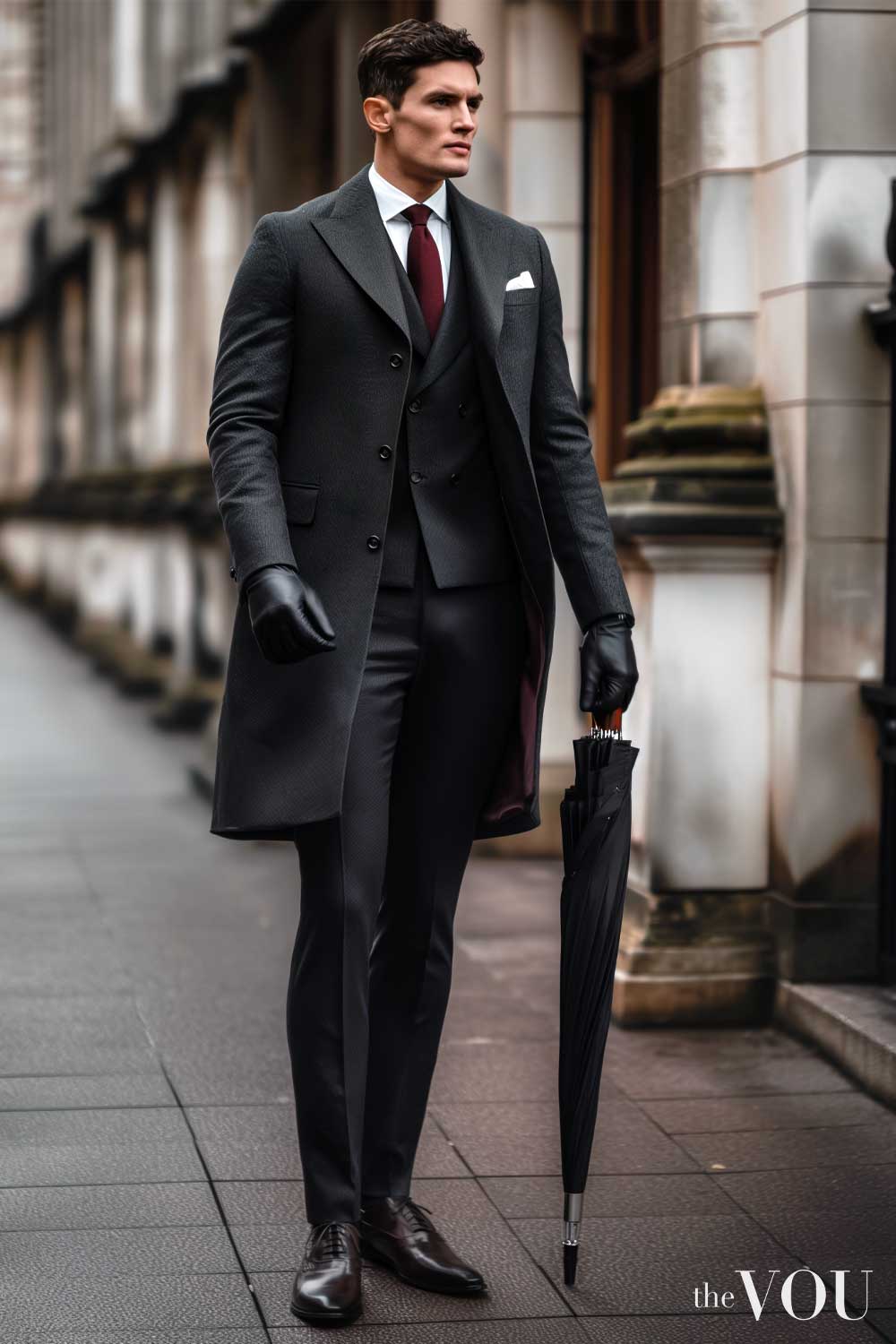
The Chesterfield overcoat is one of the few garments that transform a man’s appearance and style from ordinary to extraordinary.
The Chesterfield is not merely an overcoat but a piece of wearable history, a testament to British tailoring excellence, and a powerful tool in the arsenal of men who wish to command respect and admiration.
When properly styled, the Chesterfield is a statement of refinement, success, and sartorial prowess.
In this article, we’ll teach you how to select and style a Chesterfield overcoat to project success, wealth, and stylistic confidence.
Chesterfield Overcoat Key Features
While Chesterfield’s basic silhouette has remained unchanged for over 150 years, certain details have evolved.
For example, pocket styles are varied, and some modern interpretations forgo the traditional velvet collar.
- Fabrics – Wool (100% or blended with cashmere).
- Colours and Patterns – Charcoal grey, navy blue, black, camel, dark green, burgundy and subtle herringbone or tweed.
- Length – Hits just above the knee, typically 42-44 inches for a size 40R.
- Silhouette – Slightly fitted through the chest and waist, with a subtle A-line shape towards the hem.
- Shoulder – Lightly structured with minimal padding.
- Lapel – Notch lapel, typically 3-3.5 inches wide at its widest point.
- Collar – Contrasting velvet collar, usually black.
- Closure – Single-breasted with 3-5 buttons, often concealed (fly front).
- Pockets – Two flap pockets at the waist, sometimes with an additional ticket pocket.
- Back – Single vent, typically 10-12 inches long.
Chesterfield Overcoat Fit
Shoulders – The seam should sit at the edge of your shoulder.
Chest – Allow 4-6 inches for layering over a suit.
Sleeves – End at the wrist bone, showing 1/4 to 1/2 inch of shirt cuff.
Length – Cover suit jacket by 2-3 inches.
Collar – Should lay flat against the neck with no gap when buttoned.
Chesterfield Overcoat Origin
Before delving into the nuances of styling, it is crucial to understand Chesterfield’s rich heritage and unique characteristics, which set It apart from its contemporaries.
The Chesterfield overcoat debuted in mid-19th century London, forever altering the landscape of men’s outerwear.

Contrary to popular belief, it was not Philip Stanhope, the 4th Earl of Chesterfield, who introduced this sartorial innovation in the 1840s, but rather George Stanhope, the 6th Earl of Chesterfield.
As a member of the illustrious dandy movement alongside Lord Byron and Count d’Orsay, the Earl of Chesterfield was at the forefront of a sartorial revolution.

This group sought to refine the ostentatious Regency-era fashions, ushering in the more subdued yet equally elegant Victorian style.
Chesterfield Overcoat Outfit Ideas for Key Occasions
Corporate Meeting
For a corporate board meeting, opt for a charcoal grey Chesterfield in 100% wool with a 21 oz weight.
Wear your coat over a suit; a double-breasted suit with a notch lapel, preferably in a Savile Row cut.
Underneath, wear a white Sea Island cotton shirt with double cuffs secured with mother-of-pearl cufflinks.

Choose a burgundy grenadine silk tie, 8 cm in width, and complement it with a white linen pocket square in a presidential fold.
On your feet, black cap-toe Oxfords with a high shine, such as the John Lobb City II, complete the look.
Accessorise with black leather gloves from Dents, a silver tie bar between the 3rd and 4th shirt buttons, and a subtle dress watch like the Patek Philippe Calatrava.
Don’t forget a black umbrella with a wooden handle from Brigg for unexpected weather.
Opera Night
For an opera opening night, especially if the dress code is black tie, select a black Chesterfield in a cashmere blend (90% wool, 10% cashmere) with a 23 oz weight.
Wear this over a black peak lapel tuxedo with a single-button closure.
The shirt should be white with a Marcella bib front, adorned with onyx and mother-of-pearl studs.
A hand-tied black silk bow tie and a low-cut black waistcoat maximise the exposure of the shirt bib.
Wear patent leather pumps with a grosgrain bow and accessorise with a white silk evening scarf tied in a classic knot, mother-of-pearl cufflinks and shirt studs set, white kid leather gloves, opera glasses in a leather case, and a vintage pocket watch on an Albert chain for a touch of old-world elegance.
Charity Gala
For a high-profile charity gala, choose a midnight blue Chesterfield in 100% cashmere with a 21 oz weight.
Underneath, wear a grey Sharkskin double-breasted suit with peak lapels. Pair this with a pale blue herringbone weave shirt with a spread collar.
The tie should be a silver and blue geometric pattern, 7.5 cm in width, complemented by a sky blue silk pocket square in a puff fold.
On your feet, dark brown whole-cut Oxfords, such as those by Gaziano & Girling, add sophistication.
Accessorise with a burgundy cashmere scarf, a rose gold dress watch like the Jaeger-LeCoultre Reverso, mother-of-pearl collar stays, a lapel pin featuring the charity’s emblem, and a sterling silver money clip.
Weekend Art Gallery
For a weekend art gallery opening, a camel Chesterfield in 100% wool, 18 oz weight, is ideal for indoor-outdoor transitions.
Pair this with a navy hopsack blazer, unstructured with patch pockets, over grey flannel trousers with a flat front and no break.
An ecru Oxford cloth button-down shirt layered under a burgundy cashmere V-neck sweater adds a touch of casual sophistication.
Wear snuff suede chukka boots and accessorise with a paisley silk ascot tied loosely, tortoiseshell glasses, a brown leather portfolio clutch, a vintage silver tie clip worn as a collar clip, and a signet ring on the pinky finger for an artistic flair.
Business Dinner
For a business dinner with clients, opt for a dark green (forest) Chesterfield with a herringbone pattern and 21 oz weight.
Wear this over a brown glen check suit, single-breasted with a 3-roll-2 button stance. The shirt should be a white twill with a semi-spread collar.
An olive green ancient madder silk tie, 8 cm in width, pairs well with a cream silk pocket square with a brown edge in a TV fold. Choose burgundy medallion toe Oxfords, such as the Crockett & Jones Audley.
Accessorise with dark brown leather gloves from Pickett London, a gold collar bar, tortoiseshell acetate glasses, a Montblanc Meisterstück fountain pen, and a subtle cologne like Creed Green Irish Tweed.
Each of these outfits is carefully curated to showcase the versatility of the Chesterfield overcoat while ensuring the wearer projects an image of success, refinement, and attention to detail appropriate for each occasion.
Chesterfield Overcoat Styling Do’s and Don’ts
Understanding the nuances of wearing a Chesterfield overcoat is crucial for maintaining its elegant appearance and maximising its impact.
Here are essential do’s and don’ts to keep in mind:
Do’s
• Button the coat when standing. Leave the bottom button undone on a three-button Chesterfield to maintain the coat’s line and prevent pulling.
• Ensure the shoulder seams align precisely with your natural shoulders. A millimetre off can disrupt the coat’s entire silhouette.
• Pair your Chesterfield with leather gloves in a matching tone. Dark brown gloves complement a camel coat, while black gloves suit charcoal or navy.
• Choose a scarf that contrasts subtly with the coat. A grey herringbone Chesterfield pairs well with a burgundy cashmere scarf, adding depth to your outfit.
• Wear a slightly oversized fit if wearing over a suit. Allow an extra 1-2 inches in the chest and waist to accommodate a jacket underneath without distorting the coat’s shape.
• Select the appropriate length based on your height. For men under 5’10”, the coat should hit just above the knee. For taller men, mid-knee length is ideal.
• When stored, use wide, curved wooden hangers (at least 2 inches thick) to maintain the coat’s shoulder shape.
Don’ts
• Don’t wear your Chesterfield with casual footwear. Avoid any shoes without laces, including loafers. Opt for Oxfords, brogues, or dress boots.
• Don’t overload the pockets. Keep items minimal – a slim wallet and a pair of leather gloves at most – to maintain the coat’s clean lines.
• Don’t wear a belt with your Chesterfield. The coat’s straight cut is designed to hang cleanly from the shoulders without interruption.
• Don’t pair your Chesterfield with heavily textured fabrics. Avoid chunky knit sweaters, corduroy trousers, or tweed jackets, which clash with the coat’s refined surface.
• Don’t button your suit jacket under your Chesterfield. This creates unsightly bulges and restricts movement. Always unbutton your jacket before donning the coat.
• Don’t choose a Chesterfield in bright colours or bold patterns. Stick to classic shades like charcoal, navy, camel, or black to maintain versatility and sophistication.
• Don’t neglect proper cleaning. Dry clean your Chesterfield only when necessary, ideally at the end of each winter season, to preserve the fabric’s integrity and shape.
The Chesterfield vs Other Overcoats
The Chesterfield overcoat, the progenitor of the modern overcoat, was revolutionary in its lack of a waist seam—a feature that allowed for a looser, more comfortable fit over other garments.
This departure from the closely-fitted body coats of the era marked a significant shift in men’s fashion, influencing subsequent designs such as the Covert coat.
Conclusion
In men’s outerwear, few pieces carry the gravitas of a well-chosen, impeccably styled Chesterfield overcoat.
It is more than mere clothing; it is a statement of intent, a declaration of one’s commitment to presenting oneself in the best possible light.
From its inception in the mid-19th century to its present-day iterations, this garment has consistently signalled the wearer’s attention to detail and commitment to sartorial excellence.
Whether in the boardroom, at a cultural event, or during a weekend soirée, the Chesterfield overcoat marks you as a man of discernment and taste.



